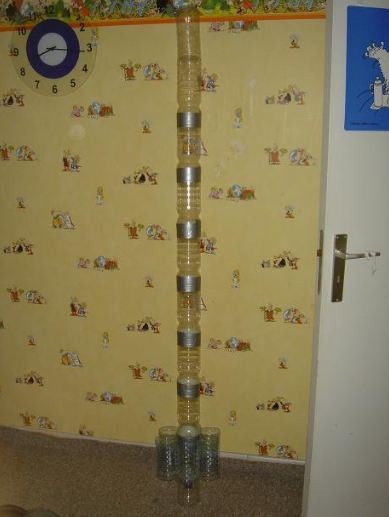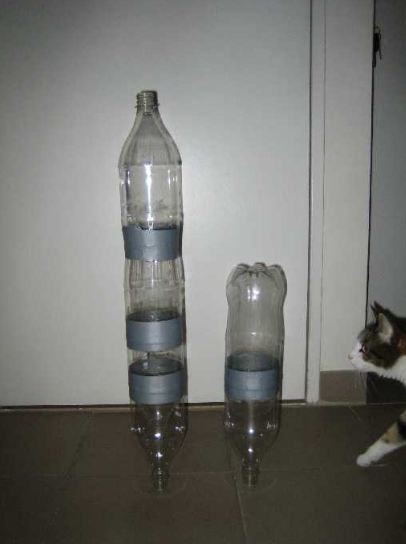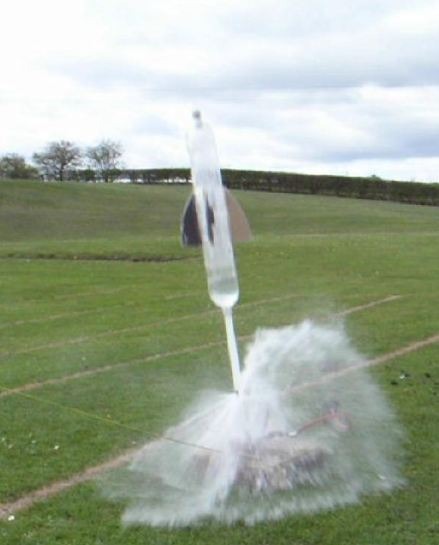You’re missing out on a fantastic project if you haven’t made and launched water rockets alongside your child. Constructing a water rocket launcher can encourage kids to learn and inspire them to dream big.
You can have a blast and learn some basic rocketry with about ten dollars worth of materials, an empty soda bottle or two, and an air pump. The sheer strength and altitude of a properly designed water rocket will astound even the weariest child.
What Makes Water Rockets Work?
Water rockets function in the same way as NASA’s rockets do. A reaction mass is driven out of a vessel with pressured gas, launching the payload into the skies. In this scenario, the pressurized gas is air pumped using a bicycle pump, the reaction mass is ordinary water, and the pressure vessel is a soda bottle.
You can propel a Coke bottle soaring hundreds of feet up in the air and wow all the other children at the playground with these easy fundamentals.
Both kids and adults enjoy water bottle rockets. They are occasionally accompanied by special effects and are launched at science fairs and in backyards. These fundamental inventions have even broken certain records in the realm of aviation, at least in comparison to other water rockets.
A closer look at their uses might help you understand the rockets and why launching them into the sky is so much fun and beneficial to kids.
Uses
Water rockets are frequently used in classrooms to teach pupils about the fundamentals of aeronautics. Different designs are available on the Internet for teachers to gain ideas for however they want their demonstrations to look.
Water bottle rockets are a common sight at science fairs. Onlookers will see the acceleration and thrust concepts that participants want to demonstrate with these gadgets.
Construction
Water rockets are usually made using 2-liter bottles. The rocket is mounted on a base that is part of a larger launcher. Air is pushed up into the water rocket by a tube that runs from the launcher’s air pump towards the rocket base. Enthusiasts must make sure that the open end of their water bottle is placed over the tubular rocket base.
The pump’s line blows air into the tube, which launches the rocket. Water is added to the soda bottle, which serves as fuel. The amount used is determined by how much thrust you want for your rocket.
Because water is significantly heavier than air, the ejected water generates far more thrust upon launch than compressed air alone. The bottle’s base is always larger than that of the tube through which it’s launched. When it’s attached to its launching tube, it transforms into a closed-pressure vessel.
The compressed air moving down the tube is equal to the amount of air created by the pump. The air propels and launches the rocket that flies to various heights based on the water utilized. Rocket amateurs can purchase kits that include everything they need.
Launching the Rocket
After you’ve finished building and decorating your rocket launcher, it’s now time to see if it will take to the air!
Unless you have a large backyard, don’t launch from there. Wind may blow even the best-made water rockets far off course, revealing any design flaws with a trajectory that sends your rocket considerably off track. So be sure you have enough room and are far away from houses, trees, power lines, and other obstructions; don’t be too disappointed if it wounds up on a roof.
Launch Safely
It’s possible to get hurt by a faulty water rocket launch: you’re putting a lot of air pressure into such a small space, and they travel relatively fast, so use caution.
- Don’t point them in the direction of anyone.
- While adding air, don’t stand over them.
- Shooting them near electrical wires isn’t a good idea.
- During the launch, make sure everyone is clear of the craft.
- Don’t inflate your rocket too much.
- Fill a third of your bottle with water for optimal height, but feel free to experiment with various ratios; it won’t hurt.
Keep watch on the PSI gauge while pumping your rocket. Standard Coke bottles fail at roughly 150 PSI; however, you don’t want to go that high, as your meticulously constructed rocket shattering into plastic debris will spoil your day. Even if you launch a rocket at 50 PSI, it will still be magnificent, and you should never push it past 90 PSI.
What Causes the Water Rocket to Take Off?
Pressure is built inside the bottle as you pump air into it. If you keep on pumping, the force of the air blowing on the water will eventually pull the cork out of the bottle, enabling water to flow in one direction whereas the bottle pushes back in another. The rocket is pushed upwards as a result of this.
Rather than squirting water, space rockets burn fuel to create a forceful jet of hot gas. The rocket is propelled higher by the downward force of the gas. This is a fantastic example of Newton’s Third Law, which states that ” for every action, there is an equal and opposite reaction.”
Encourage your child to explore more branches of science, such as Astronomy, with these catadioptric telescopes.


